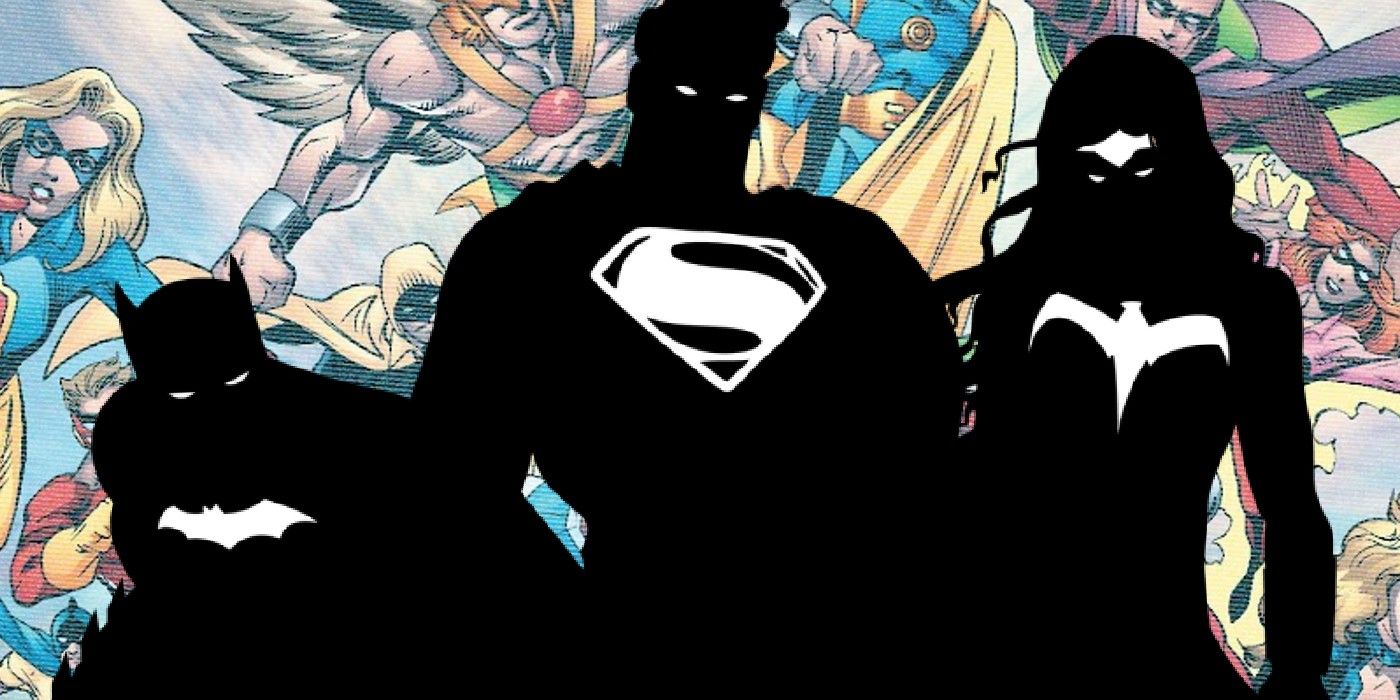[[{“value”:”
Warning: Spoilers for JSA #3The Justice League is undoubtedly DC Comics’ most popular super-team, but the Justice Society of America just proved it’s the best. Because the League recently expanded with DC’s All In era, its roster now puts every other team to shame. However, that doesn’t necessarily mean it’s the superior fighting force. The Justice Society possesses a vital quality that even the Justice League has no hope of attaining, cementing it as the better of the two.
In JSA #3 by Jeff Lemire, Diego Olortegui, Luis Guerrero, and Steve Wands, new leader Jade struggles to pick up the pieces after half of the Justice Society mysteriously vanishes. When Sandman expresses sympathy over her father being among the missing heroes, Jade replies, “Alan may be my father, but we’re all family, Sand. That’s what makes the JSA special. We’re not just a superhero team. We’re more than that.”
Unlike the Justice League, the Justice Society is fortified by a familial bond that makes it a stronger team than any other in DC lore, even without powerhouses such as Superman and Batman.
The Justice Society of America Is Better Than the Justice League Because They’re a Family
The JSA’s Long History Bonds Them Deeper Than Other DC Teams
Some might be put off by the notion that DC’s best team is not the Justice League, but the Justice Society has a history that makes it a cut above the rest. As Sandman expresses to Jade, the JSA has been around for 85 years, and it’s still going strong despite the time that’s passed and the many changes to the roster. Founded in 1940’s All Star Comics #3 by Gardner Fox and Everett E. Hibbard, the Justice Society of America was the first superhero team in history and laid the groundwork for those that succeeded it, including the Justice League.
The Justice Society preceded the Justice League by 20 years, since the latter didn’t debut until 1960’s The Brave and the Bold #28 by Gardner Fox and Mike Sekowsky.
The Justice Society’s importance to DC lore isn’t the reason it’s superior to the Justice League, however. Its roster exemplifies what sets it apart from the rest. Golden Age heroes such as Green Lantern, the Flash, Wildcat, and more encompass half of the team, while newer heroes have since joined the fray, such as Green Lantern’s children and successors to Doctor Mid-Nite and Doctor Fate. Simply put, the Justice Society is a family business, with older heroes mentoring younger ones within the same roster. The Justice Society is centered on legacy, but more than that, it’s about camaraderie that spans generations.
Justice Society Members Forge Familial Bonds That Strengthen Them as a Team
Platonic, Romantic, and Everything in Between: The Justice Society Is Full of Connections
All members of Justice Society share bonds with one another, and these bonds aren’t limited to a single binary structure. Some are romantic, some are platonic, but they’re always familial first and foremost. For instance, Sandman confesses his crush on Jade but concedes to supporting her in any way she needs him to. Even if their relationship never progresses beyond friendship, he’s content with being her family. Hawkgirl’s relationship with Hawkman has also veered into romance, but in this issue, she now admits, “I’ve come to see Carter as a big brother if anything.” Family dynamics come in all shapes and sizes, and the JSA depicts this brilliantly.
Related
The Justice Society Officially Has a New Leader (Is She the Right Choice?)
A next-generation hero has stepped up to lead the Justice Society, but her leadership may not be enough to unite the fractured team in dark times.
A key example of how the JSA operates as a family can be seen in how the team’s veteran heroes treat the new Doctor Fate. Khalid Nassour is frustrated after inadvertently trapping his allies in the Tower of Fate, but Wildcat takes on a paternal role to assure him that he’s more capable than he thinks. He says that he’s proud of Khalid no matter what, and when Doctor Fate successfully uses his powers to vanquish the Injustice Society, the Flash expresses pride in him as well. The Justice Society’s members being present for each other, even in their lowest moments, demonstrates how close they truly are.
Justice League’s Unlimited Expansion Doesn’t Allow for Genuine Connections
DC’s Revamped Justice League Is an Army, Not a Family
The Justice Society’s status as a family is its greatest strength, and it’s a strength that the Justice League notably lacks in comparison. In DC’s new era, the Justice League has made its long-awaited return after years of disbandment, and with its comeback there has been a major change to its line-up. For the first time, every hero in the DC Universe is welcome on the team. This new “unlimited” Justice League unites superheroes in a big way, but the roster being expanded to such an enormous size also inherently prevents its members from forming genuine connections outside their duty.
Check out the Justice League’s ongoing adventures in Justice League Unlimited #1 by Mark Waid and Dan Mora, available now from DC Comics!
The reformed Justice League has been described as an “army of justice“, and therein lies the main difference between DC’s premier team and the Justice Society. Because its roster encompasses all heroes, mission specialist Red Tornado sends them off on missions by figuring out whose powers are best equipped for a certain scenario. Justice League team-ups are dictated based on practicality, with members treated as soldiers being deployed rather than friends having each other’s backs. Simply put, the Justice League is a nine-to-five job where coworkers come and go without forging meaningful relationships, whereas the Justice Society is a tight-knit family that loves each other.
The JSA’s Heroes Support Each Other In and Out of Battle, Unlike the Justice League
The Justice League Is Bigger, But That Doesn’t Mean It’s Better
The Justice League may have strength in numbers, but the Justice Society of America has strength in bonds.The support they display on missions doesn’t end once they “clock out” of their superhero work. In Justice Society of America #26 by Geoff Johns, Dale Eaglesham, and Peter Snejbjerg, the team commemorates Stargirl’s birthday wish to have her braces removed by being present for her dental appointment. It’s impossible to picture the Justice League supporting a teammate in such a sentimental fashion, since they regard their peers as comrades-in-arms more than anything else.
The Justice League may have strength in numbers, but the Justice Society of America has strength in bonds.
Although the Justice League is bigger than it’s ever been before, the Justice Society has proven to be the superior team, due in large part to its smaller size. By not incorporating every single hero, the heroes that do have membership get to form meaningful friendships with each other through that proximity. These legacy heroes watch each other grow and change, with the veterans overseeing DC’s next generation of superheroes by offering parental guidance. The Justice Society of America has endured longer than every other team, including the Justice League, because they care about each other like a real family would.
JSA #3 is available now from DC Comics.
Justice Society of America
The Justice Society of America is a DC Comics superhero team initially conceived during the 1940s and featured a mix of various heroes throughout DC Comics’ continuity. Throughout the decades and via modern relaunches of the JSA, new members have been cycled in and out of the team, with heroes such as Stargirl, Cyclone, Wildcat, and Atom Smasher joining the ranks.
“}]] The JSA beats the Justice League for one reason. Read More

